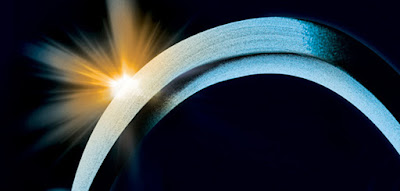The Green Hornet #1 Review

As a character, The Green Hornet has never
really piqued my interest. Admittedly it's not like he ever had much
of chance given my first introduction to the character was the 2011 Green
Hornet film staring Seth Rogen. Reading Kevin Smith's Green Hornet
screenplay turned comic did little to remedy the situation as it
didn't really bring anything new to the mythos. Well, unless you count
making the Hornet's chauffeur, Kato, a female and for the record, I don't
As far as I was
concerned, The Green Hornet was nothing more than a goofy playboy
vigilante. Just another costumed crime-fighter desperately being milked for cash in the age of super-hero super-stardom.
 I'm glad to say that all changed as
soon as I read Green Hornet #1 from Dynamite Entertainment.
Right from the first panel, the issue works hard to prove just what a
unique and iconic character the Green Hornet actually is. In 22 pages
Mark Waid and Daniel Indro turned me from Hornet hater to die hard
fan.
I'm glad to say that all changed as
soon as I read Green Hornet #1 from Dynamite Entertainment.
Right from the first panel, the issue works hard to prove just what a
unique and iconic character the Green Hornet actually is. In 22 pages
Mark Waid and Daniel Indro turned me from Hornet hater to die hard
fan.
Where the previous Hornet stories I
encountered tried to make Britt Reid relevant by dragging him kicking
and screaming into the 20th century, Waid takes a
different and more effective approach.
There are no gags, no gimmicks
and no attempts to make the Hornet something that he isn't. This is a story about the Green Hornet fighting crime in 1930's Chicago. Instead of
using a modern setting to make the Hornet relevant, Waid simply
reminds us why he always has been so. By keeping Britt in his natural
habitat the book brings a revitalizing relevancy to the character, up
there with what Ed Brubaker did for Captain America.
Much to my relief Green Hornet #1 is not an introductory issue. Instead it plunges the reader into
the 20th century world of newspaper publisher Britt Reid,
a.k.a the Green Hornet. Although Waid makes sure he gives you just enough background, there's no spoon feeding here.
A couple of pages in and it becomes clear that Waid's Run will focus on the Green Hornet's civilian identity, Britt Reid, as much as the Green Hornet himself. Indeed the real strength of the character is the way
in which these two identities go hand in hand. In his vigilante guise
he uses his fabricated reputation as a costumed criminal to gain the
trust of unsuspecting crime bosses and as the outspoken publisher of
the daily Sentinel, Reid brings the evidence the Hornet digs up to
nail the crooks in the headlines. It's an effective collaboration,
and one that is really the focus of this first issue.

This dynamite script (pun intended) by
Waid is brought to life by Indonesian artist Daniel Indro who's
previous works include Flash Gordan Zeitgeist and Sherlock Holmes:
Year One. Indro's interiors feature a certain film noir sensibility
mixed with an obvious attention to the comic book format. His style is
very static and moody, capitalizing on crosshatching and a liberal use
of shadow.
Unfortunately Waid's great writing and
definitive direction mean that the art certainly isn't the strong point
of this book. I would almost go as far as to say it overshadows it. Almost. Not that Indro's art is a weak point, but in a sea of great comic book art talent, the artwork doesn't really assert itself as iconic or
different. It works well for the character but it's certainly not the book's draw card. In short, the marriage between writing and art is uneven.
This criticism aside, The Green Hornet #1 is just another
reason why Mark Waid is the writer to follow. As he did for
characters like The Hulk, Daredevil and Superman, Waid made me fall in
love with the Green Hornet: a character I previously didn't give a toss about. It's
well paced, punchy and well worth your five bucks. So do yourself a
favour and pick up a copy.



Comments
Post a Comment
Thanks for taking the time to read and comment! Bill Murray says: YOU'RE AWESOME!